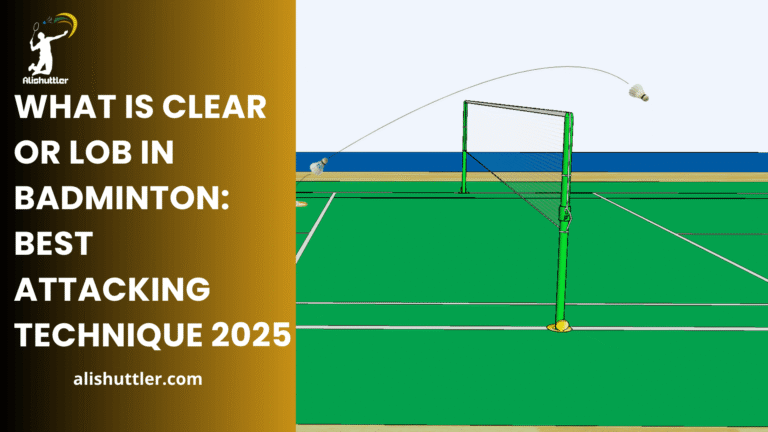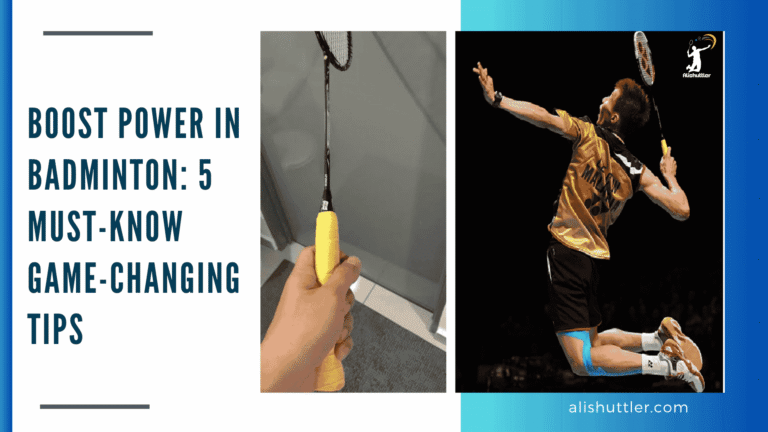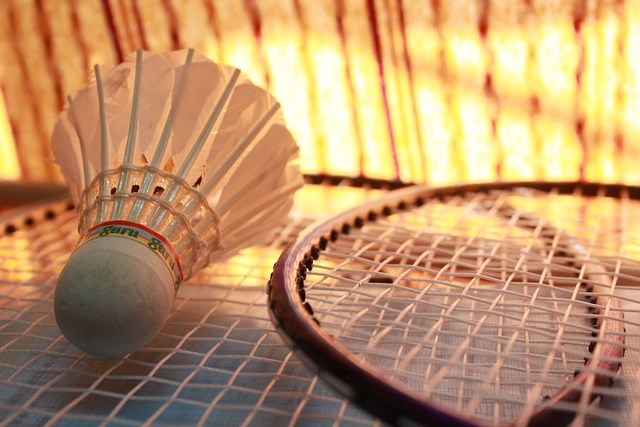Find top Badminton Grip Yonex overgrips and replacement grips for better hold, comfort and control.
Our key picks are Yonex Super Grap (tacky, 0.6 mm), Yonex Wave Grap (dry feel, sweat-wicking) and Yonex Hi-Soft (cushion for shock).
For slim handles, apply thin overgrips in 2 layers. For sweaty palms, choose dry or perforated wraps.
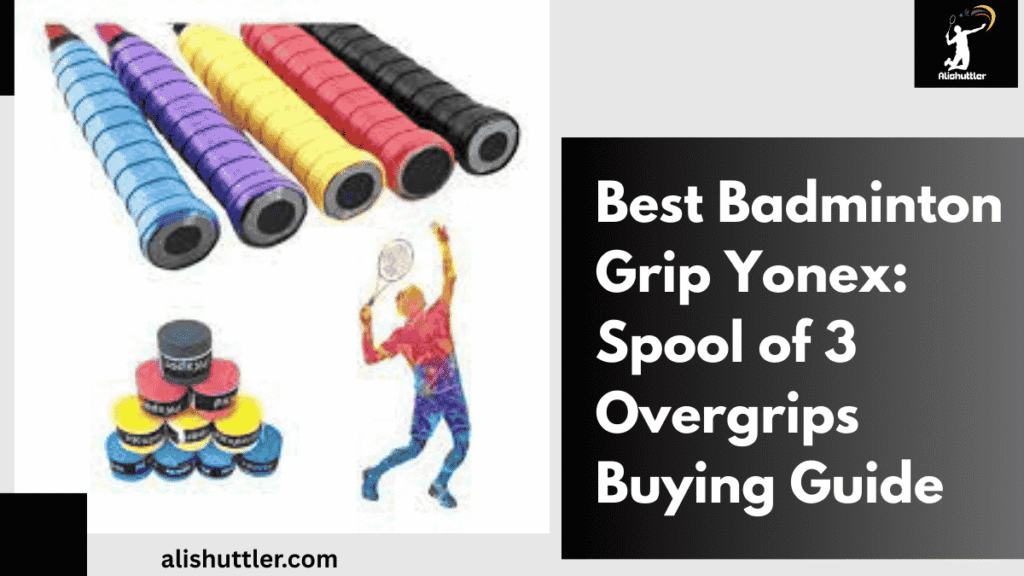
To select smart, pair feel, thickness and durability with play style. The guide below details each choice with use cases.
Grip Fundamentals
Grip selection is crucial in determining how the badminton racket rests in hand, shifts on contact, and maintains ease during action. A solid badminton grip increases control, energy transfer, and confidence. Factors like thickness, material, and texture directly influence feel. Softer grips provide padding and shock absorption, while thinner grips offer feedback and facilitate fast transitions. Smooth, tacky, or porous textures can significantly alter how the hand locks in, controls sweat, and fights slip, ultimately impacting shot control and rally recovery.
To achieve the perfect grip, maintain the thumb on the bevel that faces the racket’s front and avoid extending the index finger to reduce tension. Mastering techniques like the bevel grip and backhand thumb grip allows players to rotate between them effectively. If form falters mid-match, resetting hand shape can help correct mistakes that often originate from grip issues.
Tools that assist with finger placement can enhance your experience with different grips. Wrapping the right badminton grip tape correctly, along with how-to videos, can significantly improve your racket handling during intense rallies, ensuring you make the most out of your badminton sessions.
Replacement Grips
Replacement grips are the underpinning on the naked shaft. They provide more padding than overgrips and are more durable. They fit players seeking a clean slate, must shock cut for elbow/wrist comfort, or wish to tune handle size by a millimeter or two.
A thicker base can slow finger rolls but mutes harsh feedback, a thinner base can speed changes of grip but may feel firm. Pick tack if you want that locked feel, or a drier surface if you’re a heavy sweater. When the base gets slick or loses tack, swap it; worn edges and smashed foam mean it’s time.
- Polyurethane (PU) with foam underlay
- Synthetic leather (firm, durable)
- Hybrid PU-microfiber blends
- Perforated PU for airflow
Proper wrapping from the butt cap upward with even overlap eliminates ridges that create hot spots. Go with a guide, and stretch only enough to prevent bunching.
Overgrips
Overgrips are thin wraps that modify the badminton racket grip by enhancing tackiness, soaking up sweat, and altering feel immediately. They’re particularly useful for rapid in-between game flips, travel play, or moist gyms. Many badminton players carry a couple of rolls to keep their racket handle fresh, allowing them to extend the life of the original grip while maintaining optimal surface performance.
These grips offer a range of textures, being smooth for quick hand swaps, tacky for secure holds during intense rallies, and available in perforated or towel-style designs for heavy sweating. Thickness typically ranges from about 0.4 to 0.7 mm — thinner options maintain feedback, while thicker ones provide gentle padding.
For those who experience sweating, applying a drier style can be beneficial, while tacky grips are perfect for stiff bites on steep smashes. Proper wrapping techniques, starting from the butt cap with slight overlap and securing with finishing tape, are essential for a good grip.
Re-wrapping is necessary when edges fray or tackiness diminishes. A consistent, proper badminton grip allows players to strike the shuttle crisply and securely, enhancing their overall game experience.
Yonex Grip Selection
Yonex offers an extensive selection of badminton grips—full, towel, and overgrips—for various hand sizes, sweat levels, and playing styles. Their grips feature materials ranging from tacky polyurethane to absorbent terry and resilient synthetic rubber. When choosing the right grip, match the size to your hand: Yonex labels run from X-Small to Large (G4–G1), with G3–G1 (medium to X-Large) fitting most badminton players. Since not every player prefers the same feel, it’s wise to experiment with a few different grips before making a final decision.
- Standout features:
- Super Grap (AC102): tacky, forgiving, strong all-round pick.
- AC402EX towel: high sweat control, stable in humid play.
- Reinforced PU/synthetic rubber lines: long wear, shape hold.
- Overgrips: fast size tune, add tack, easy swap.
- Best uses:
- Fast, control-first rallies: tacky PU.
- Humid venues or heavy sweat: towel or absorbent overgrip.
- High-volume training: durable PU/rubber.
- Comfort-first or big hands: thicker, cushioned wrap.
1. For Tacky Feel
Super Grap is the default call for many as it combines tacky and light sweat absorption with a fresh, sticky surface. It helps lock the handle when you snap the wrist or change grips mid-rally. Tacky grips suit fast play and tight net shots, where tiny slips lose points.
Dry hands get the most benefit since tack grips the best without going slick. Normal-sweat players frequently run Super Grap as a full grip for a consistent compromise of comfort and durability. Anticipate faster swaps if you sweat a lot — tack deteriorates faster when moist.
2. For Sweat Absorption
Towel grips (e.g. Yonex AC402EX) absorb sweat quickly with terry cloth loops that wick perspiration away from the skin. This holds the handle firm in sticky halls and extended matches where palms remain moist. Absorbent overgrips are an alternate way.
Wrap one overtop of your base grip to increase sweat management without altering fundamental feel. Swap towel or absorbent layers frequently for sanitary reasons, but to keep wicking crisp.
3. For Durability
Grips constructed from synthetic rubber or reinforced polyurethane retain shape, edge and tack longer under heavy load. Frequent players and hard hitters benefit from this as the surface resists flattening and ripping. Even after long use, good PU maintains stable bite and doesn’t crumble as fast.
That said, inspect wear on the thumb pad and bevels, replace prior to slick patches causing slips.
4. For Cushioning
If you demand shock cut and palm comfort, grab cushioned PU with thicker build. It reduces sting on off-center hits and reduces hand fatigue in long drills and league nights. Bigger hands tend to prefer a bulkier wrap to steam out the palm.
Too much padding deadens signal. If touch is paramount, keep the layer limited. Overgrips can dial in size and feel without a total rewrap.
Size Matters
Grip size affects how a Yonex racket rests in your hand and how quickly you can change grips. Size identifiers such as G4, G5 correspond to the circumference of the handle, often in centimeters or inches. Typical grip sizes span 3.0–3.7 inches (approximately 7.6–9.4 cm).
Pros generally employ 8.0–8.6 cm and the majority of club players end up somewhere closer to 9.0–10.5 cm. A 1 cm jump seems huge; it can alter your forehand–backhand switch speed and the bite you achieve in tight net play.
Hand size, measure your hand first. Wrap a flexible measuring tape around the palm just below the fingers (not including your thumb) to obtain circumference in centimeters. Remember the number, then cross reference it with a Yonex grip size chart and other brands.
Grip sizes differ between manufacturers, so a Yonex G5 might not be the same as another company’s small. If you’re in between sizes, start thinner and build-up with an overgrip to ‘right-size’ feel.
| Grip size choice | Pros | Cons |
|---|---|---|
| Thinner (e.g., G5) | Better feel, faster grip changes, easier wrist snap | Can cause tension, less stability on smashes |
| Medium (e.g., G4) | Perfect balance of control and power, great for all styles | Can still feel small/large for edge cases |
| Thicker | Steady on clears/smashes, less finger fatigue for big hands | Slower grip changes, duller touch, harder angles |
The perfect size regulates technical strokes, such as tight net lifts, holds and fast pronation, all the while maintaining natural arm positions across long rallies. A grip that’s too thick slows changes from forehand to backhand and can lock the wrist.
Reassess as grips wear down with play – if you play twice a week, expect to replace the grip about every 6 weeks.
G4 Handle
G4 is a medium grip size that accommodates lots of average-sized hands. It provides a solid feel for drives, clears and net work without flinging the hand open or closed. Singles and doubles players use it when they want one setup that does most things well, not the most whip or the most bulk.
G4 fits with virtually any racket and string bed, and it compliments one overgrip if you desire an extra bit of substance. Test G4 before you buy: check if your index and middle fingers wrap without gaps, and make sure the thumb pad sits firm for backhand defense.
G5 Handle
G5 is the smaller choice, preferred by players with smaller hands or those who want more wrist action for cuts, slices, and quick deception. Hard hitters who depend on quick grip transitions, finger strength and crisp net approaches gravitate toward this size as it remains agile in these rapid-fire rallies.
If you have larger hands G5 can start to feel cramped and decrease control in heavy clears. Throw on a single thin overgrip if you want a little extra girth but don’t want to sacrifice speed.
Keep notes on circumference: aim for 8.0–8.6 cm if you prioritize elite-level finger play, and reconsider if you drift above 9.0 cm with layers.
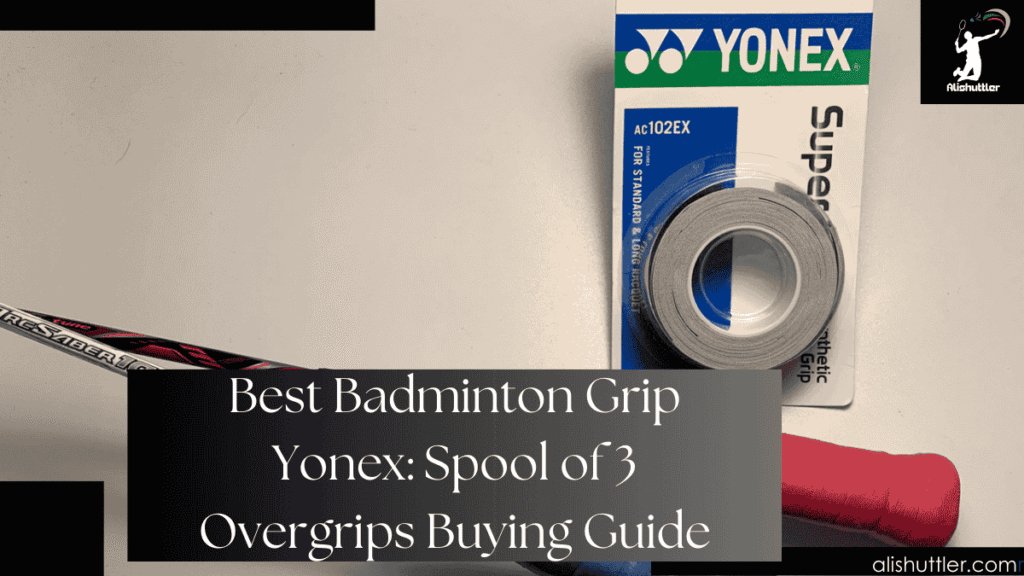
Player-Grip Synergy
Pairing a Yonex badminton grip to your style, hand size, and conditions enhances racket handling, speed, control, and comfort. The right grip can tighten shot patterns, reduce strain, and maintain touch throughout extended play, making it essential for badminton players to document what works for them.
Playing Style
Aggressive players who hit sharp smashes and hard drives benefit from thinner, sticky alternatives such as Yonex Super Grap (approximately 0.6–0.7 mm as an overgrip) atop a standard base. Thin + tack lets the hand ‘lock’ with less lag, so head speed + power transfer remain high. A lot of attackers like a slightly smaller effective grip size for fast finger power on late takes at the net.
Control-first or defensive players frequently gravitate to cushioned, thicker builds. A soft polyurethane replacement grip or a towel base with a single overgrip provides support and distributes pressure, stabilizing blocks, lifts, and pushes. That additional cushioning may minimize hotspots, minimize fatigue and minimize wrist pressure during extended rallies.
Doubles specialists change grips more mid‑rally, so fast‑drying surfaces assist. Towel grips such as Yonex AC402 or sweat‑absorbing overgrips keep handles fresh when you switch between forehand and backhand grips at the tape.
Tune the grip to your staple shots and areas. Back‑court bombers: thinner, tackier. Net hunters who tap and spin: tack with a slightly larger build for touch. Retrievers: add cushion. If you’re not certain, test one modification at a time and observe how target accuracy, miss‑hits, and hand comfort change.
Sweat Level
If you sweat buckets, be absorbent. Yonex towel grips or moisture‑wicking overgrips eliminate slip, keep strings of clears neat and safeguard accuracy when speed soars. They supercede sweat by wicking it and limit micro‑movement, which means no blisters.
Dry hands generally do well with tacky surfaces for a reliable, consistent hold. The constant tack feel aids fine control on tight net shots and sliced drops.
Bring spare overgrips for swaps between games in high‑sweat sessions. Fresh wrap brings back friction and reduces fatigue. Sweat is different with heat, hall air flow and match pace. Swap thickness or material as conditions change.
Document what you use: base grip type, overgrip model, final diameter measured around 85–90 mm circumference, and notes on comfort, spin control, and accuracy.
Climate Impact
In sticky gyms, absorbent builds limit slippage and stabilize the face angle on defense. In dry, cool air, tacky or rubbery PU grips grip without over-dry drag, aiding clean finger bursts.
Severe hot or cold quickens wear. Rewrap on time, clean residue, and swap out when edges smooth, because a worn surface hinders control and can increase injury risk.
Anticipate seasonal adjustments. Record climate, grip combination, and results to maintain feel consistent year-round.
Grip Maintenance
Clean dry hands and a dry handle save tack and feel. Inspect your Badminton Grip Yonexregularly for wear, slick spots or sharp ridges. Change at the very first indication of slip or palm hot spots.
Stock two spare overgrips and one spare replacement grip in your bag, along with finishing tape and small scissors. Let rackets air out between sessions to prevent moisture buildup not sealed up in car trunks or damp lockers.
When to Replace
Replace the grip when the surface smooths out, the edges begin to lift or the wrap rips. Any loss of tack or cushion translates into less control on sharp cuts and net kills.
Following extended match play or an intense practice block, change to a new overgrip to keep swing confidence elevated. Towel grip is different: it peaks for roughly two sessions, then drops fast, though it may feel better after a few hours of sweat.
Determine a schedule based on court time. For the majority of players, change every two weeks or less if you train over 3 times per week.
Replacement Badminton Grip Yonex last longer than overgrips, so a common plan is: new replacement grip every 4–8 weeks, new overgrip every 1–3 weeks.
Wait too late and you run the risk of frame twists on impact, tighter forearm grip and sore wrists. Lousy grip causes slips which lead to mishits and increases injury risk in the shoulder and elbow.
Use Badminton Grip Yonex powder on your hands before handling it adheres better and maintains tackiness longer. Comb” a dry towel grip with a knife edge to lift fibers and squeeze a few more sets out of it.
Always allow handles to air dry completely between uses.
How to Wrap
- Wash and dry your hands. Wipe the exposed handle dry. Tear off old glue, then inspect for cracks or loose staples.
- Begin at the butt cap. Peel a centimetres or so of backing. Anchor the tapered end and pull the grip snug, not tight.
- Curl upwards, overlapping slightly, 2–3 mm. Apply tension evenly so the surface is unmarred by ridges.
- At curves near the cone, adjust overlap to prevent gaps. If using a thin overgrip over a Badminton Grip Yonex replacement grip, make the overlap smaller to maintain handle size.
- Make a nice angle at the finish near the cone. Anchor with finishing tape, press to halt peel.
- For towel grip, allow a hair more overlap to prevent fray. Allow it to dry pre play, it glides better after a bit of sweat.
- Test the sensation on forehand and backhand Badminton Grip Yonex. If in doubt, check out a Yonex wrap video or refer to the insert specific guide for your model.
The Badminton Grip Yonex Edge
Badminton Grip Yonex pioneers grip innovation with constant R&D, athlete input, and rigorous quality control. The brand pours in materials and fabrics that withstand heat, sweat, and extended match play, ensuring that badminton players can rely on a good grip during intense rallies. Comfort and performance sit at the core—soft feel without bulk, stable tack without harsh stick, and consistent traction as the badminton grip wears.
Durability is an ongoing objective with real-court testing to monitor wear, color staining, and sweat response across different grips. The range is wide, offering the best Badminton Grip Yonex and overgrips of various thicknesses and lengths to fit small and large handles, as well as colors ranging from black to vibrant neons.
Most players begin with a Badminton Grip Yonex replacement grip, then switch to a Yonex overgrip every 2–3 weeks to rejuvenate tack and sanitary standards. Results are repeatable, which is why Yonex grips continue to be a safe choice for the majority of players who desire tested excellence in their badminton experience.
Material Science
Badminton Grip Yonex depends on PU, synthetic rubber blends, and terry to tune tack, absorbency, and cushion. The best badminton grips often incorporate PU, which offers that traditional Super Grap touch sticky on impact, cushiony on the palm, and featherweight on the scale. Rubber blends add snap-back and shape retention, enhancing the overall badminton racket grip experience.
Terry wraps absorb sweat quickly for athletes in steamy gyms or blazing sun, making it an essential feature for many badminton players. Such decisions correspond to obvious advantages; PU provides tack and a crisp sensation for fast grip transitions, while terry panels slice moisture and skin slippage. Rubber cores have structure, ensuring the handle doesn’t feel mushy mid-rally during intense rallies.
User reports vary: some find Super Grap stays prime for a week, then gets dirty and loses tack, especially in light colors. However, others claim it remains good if they change to a new Badminton Grip Yonex every three weeks or scrub it with a stiff toothbrush after play. This shows the importance of selecting the right grip based on personal preference and playing conditions.
Yonex stress-tests for abrasion, sweat, and heat. That said, sweaty hands will test boundaries. Some players migrated to other brands that feel more stable when soaked, or discovered Yonex slick when saturated. Contrast absorbency claims and thickness, as well as base vs over Badminton Grip Yonex layers, with your court climate and sweat volume to find the right handle Badminton Grip Yonex for your game.
Texture Innovation
Yonex constructs textures that mold control, especially in the context of the Badminton Grip Yonex racket grip. You’ll discover options like ridged wraps for finger indexing and perforated films that vent sweat, alongside smooth finishes for a clean slide when switching grips mid-rally. Texture is essential for shot accuracy, particularly when selecting the best badminton grips for your style.
Micro-ridges help secure your thumb on a backhand, while clammy spots can cut performance. Smooth PU may feel fastest for quick shifts, but it can sacrifice some hold once palms get wet. Experimenting with different grips throughout sessions, not only during warm-ups, can enhance your overall game experience.
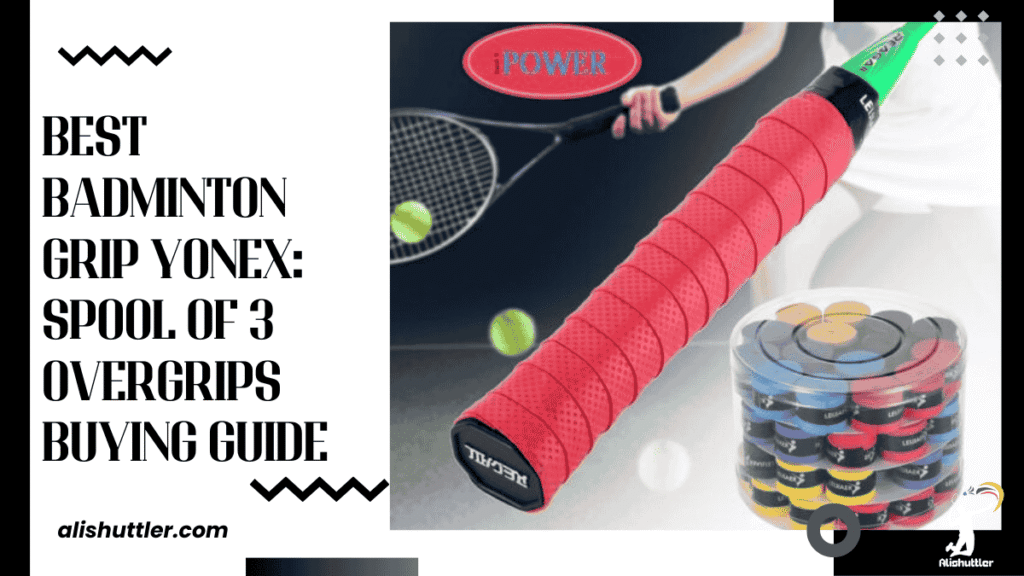
Notice how your forehand drive, net kill, and lift respond as sweat accumulates. If a smooth grip becomes slippery, try popular Badminton Grip Yonex tapes with perforated or terry tops. If ridges seem too ‘busy’, consider going thinner and smoother for more sensitive feedback, ensuring you find the right grip for your needs.
Final Thoughts on Badminton Grip Yonex
A nice grip feels secure in the hand. Badminton Grip Yonex provides obvious alternatives that address actual desires. Sweaty palms? Opt for a sweat-wicking overgrip, such as AC102EX. Want more hold? Go with a tacky wrap, such as Super Grap. Need more feel? Try a thin base grip. Want less shock, select a soft, cushy one.
Not done Size still reigns. Test fit by the way your fingers touch your palm. Leave a little space, a finger width or 1–1.5cm. Modify one thin wrap at a time. Keep it clean, replace it before it peels, and trim loose ends that baad.
To dial it in, try one yonex grip for a week. Track slip, comfort and control. Share your winning blend and why.
Frequently Asked Questions
What is the best Yonex grip for beginners?
For the majority of novices, the Yonex Super Grap (AC102) is a safe bet as it offers a perfect grip that is tacky, comfy, and quick to wrap. This badminton grip enhances control without adding significant weight, making it a popular choice among badminton players of all levels.
How do I choose the right Yonex grip size?
Measure palm to fingertip and verify your badminton racket grip size. If your hand is cramped, consider adding an overgrip tape for better handling. If it feels bulky, peel off layers to achieve the right grip.
Overgrip vs. replacement grip: which should I use?
Applying a new badminton grip or overgrip can enhance your racket handling by refining feel, adding tackiness, or absorbing sweat, making it essential for badminton players who want to maintain control during intense rallies without replacing the original grip.
Which Yonex grip is best for sweaty hands?
Select Yonex Dry Grap (AC147) or Towel Grip for enhanced moisture management, as these popular badminton grips keep the handle dry and minimize slipping during intense rallies.
Does grip thickness affect power and control?
Yes, the right badminton racket grip can significantly affect your game. Thicker grips offer more cushioning and absorb vibrations, while thinner grips enhance maneuverability. It’s essential to match the grip thickness to your playing style and hand size for optimal racket handling.
How often should I replace my Yonex grip?
Change overgrips, such as popular badminton grip tapes, every 10-20 hours of play, or sooner if they lose tackiness or darken. Replacement grips typically last longer — roughly 40–60 hours, depending on sweat and climate.
Why choose Yonex grips over other brands?
Yonex grips are uniform, long lasting, and extensively pro-tested, offering different textures and thicknesses. Their moisture absorption capabilities help badminton players tailor the badminton racket grip to their level, style, and weather conditions.


